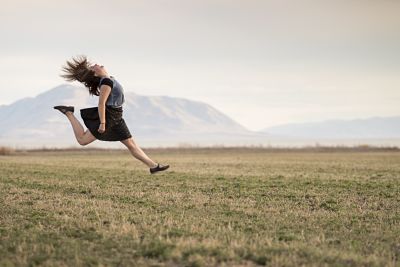Quotes by Daniel H. Wilson
I was writing a scene where a guy was choking another guy to death. You can go online and type 'chokeholds' and watch scenes where martial artists choke each other out. You can hear what noises they make when they go unconscious, see how their bodies flop and everything. YouTube is amazing for the more detailed stuff.
In my books the technology that I choose to talk about has to serve the themes. What that means is that I end up having to cut out a lot of cool technology that would be really fun to describe and play with, but which would just confuse everybody. So in 'Amped,' I focus on neural implants.
I was writing a scene where a guy was choking another guy to death. You can go online and type 'chokeholds' and watch scenes where martial artists choke each other out. You can hear what noises they make when they go unconscious, see how their bodies flop and everything. YouTube is amazing for the more detailed stuff.
Over the past 50 years we got versions of X-ray specs and space vacations, and even death rays. But the X-ray specs don't fit on your face - they're big things that screen your luggage for guns. Space vacations are real, but they cost $20 million. We have death rays, but you have to be a triple Ph.D. to play with them.
The poster boy for our superabled future is Oscar Pistorius, an increasingly famous South African sprinter who happens to have had both of his legs amputated below the knee. Using upside down question mark-shaped carbon fiber sprinting prosthetics, called Cheetah blades, Mr. Pistorius can challenge the fastest sprinters in the world.
Change creates fear, and technology creates change. Sadly, most people don't behave very well when they are afraid.
The fear of the never-ending onslaught of gizmos and gadgets is nothing new. The radio, the telephone, Facebook - each of these inventions changed the world. Each of them scared the heck out of an older generation. And each of them was invented by people who were in their 20s.
'Robopocalypse' explores the intertwined fates of regular people who face a future filled with murderous machines. It follows them as humanity foments the robot uprising, fails to recognize the coming storm, and then is rocked to the core by methodical, crippling attacks.
The poster boy for our superabled future is Oscar Pistorius, an increasingly famous South African sprinter who happens to have had both of his legs amputated below the knee. Using upside down question mark-shaped carbon fiber sprinting prosthetics, called Cheetah blades, Mr. Pistorius can challenge the fastest sprinters in the world.
Looking ahead, future generations may learn their social skills from robots in the first place. The cute yellow Keepon robot from Carnegie Mellon University has shown the ability to facilitate social interactions with autistic children. Morphy at the University of Washington happily teaches gestures to children by demonstration.
